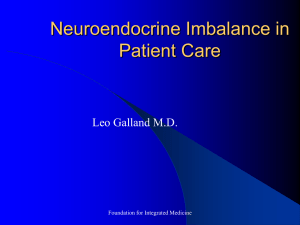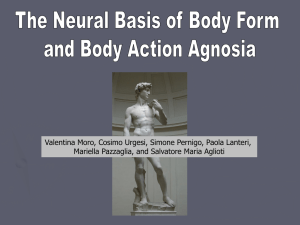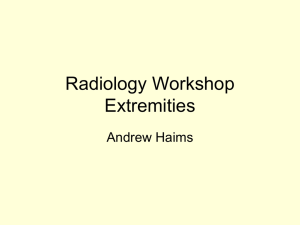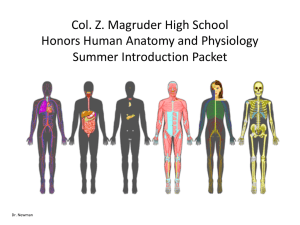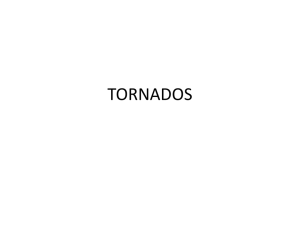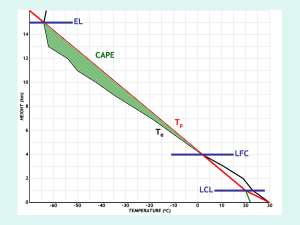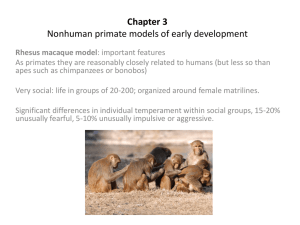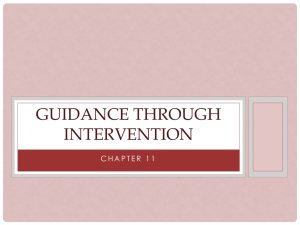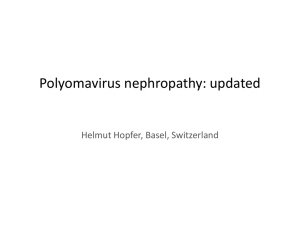Amanda Prostrollo
advertisement
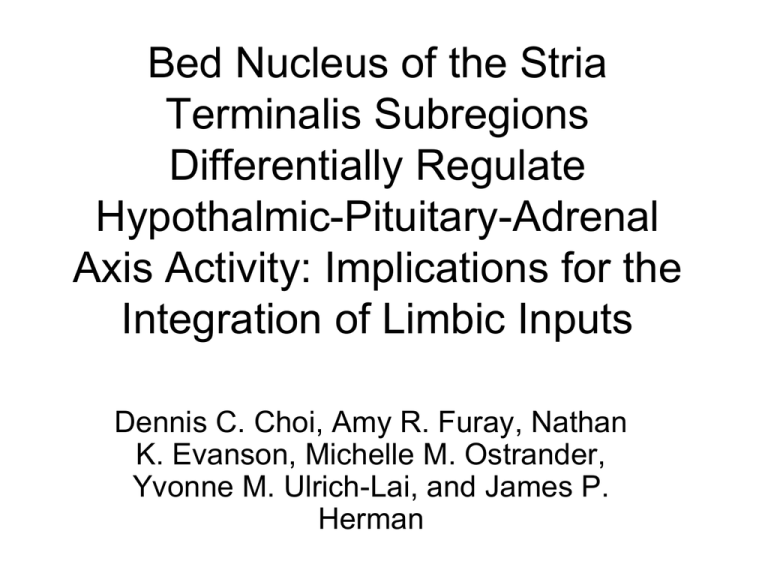
Bed Nucleus of the Stria Terminalis Subregions Differentially Regulate Hypothalmic-Pituitary-Adrenal Axis Activity: Implications for the Integration of Limbic Inputs Dennis C. Choi, Amy R. Furay, Nathan K. Evanson, Michelle M. Ostrander, Yvonne M. Ulrich-Lai, and James P. Herman Introduction • Amygdala, hippocampus, and medial prefrontal cortex influence HPA axis • LimbicBNSTPVN • BNST subdivided The Big Point • Subregions of the BNST differentially regulate HPA axis responses to acute stress Nijsen Paper: background information • BNST is involved in autonomic and behavioral reactions • BNST is a rostral forebrain structure • Enclosed by lateral ventricle, lateral septum, fornix, nucleus accumbens, preoptic area, and hypothalamus • Links amygdala and hippocampus with PVN and brain stem Methods and Materials • • • • • 36 male Sprague Dawley rats (275-300g) 3/cage Food/water ad libitum Temp and humidity controlled 12h light/dark (Lights on at 6am) Methods and Materials • • • • • Day 1: Surgery Days 2-8: Recovery Day 8: Restraint stress (9:30-10:30am) Day 9-15: Nonhandled recovery Day 16: 2nd restraint stress and killed – Killed 30 min after restraint for peak of c-fos Methods and Materials • Lesions identified – Needle track – Loss of neurons – Gliosis (increase in size and number of astrocytes) Animals included • Bilateral damage included • Partial unilateral lesions removed • Missed lesions removed Results • Anterior BNST lesions damage fusiform and dorsomedial nuclei • Posterior BNST lesions damage principle, interfascicular, and transverse nuclei C-fos, CRH, GAD 65 mRNA expression in BNST • C-fos decreased with anterior lesion • CRF decreased with anterior lesion • GAD 65 decreased with anterior lesion • GAD 65 diminished with posterior lesion – \ lesions were successful Successful Lesions C-Fos mRNA expression Plasma ACTH • • • • Elevated at 30 and 60 min (all groups) Posterior lesion elevated Anterior lesion no effect Same at 0 or 120 min (all) Plasma ACTH graph Plasma Corticosterone • Increased B to restraint • Anterior lesion decreased B at 30 min • Posterior lesion increased B at 60 min Plasma Cort graph Posterior BNST lesion and the HPA axis • • • • Increased secretion of ACTH and B Increased c-fos mRNA Increased CRH and AVP mRNA in PVN Inhibits HPA response to stress Posterior BNST • Restraint induced c-fos expression enhanced by lesion • Principal nucleus inhibits the PVNmp • Principal nucleus regulates HPA activity Anterior BNST lesion and the HPA axis • Decrease B and c-fos • No alteration of CRH and AVP in PVN • CRH and Glu activate HPA Discussion • Specific roles of BNST nuclei • Anterior excites PVN, promotes B secretion • Posterior inhibits PVN excitation, ACTH release, and B responses • Posterior lesion enhances c-fos expression McGill Paper 308/Y WT • Crh gene expressed in BNST • Encodes CRH • Increased anxiety and stress • Overexpression HPA dysfunction Nijsen Paper • • • • • Restraint stress induces c-fos expression Stress activates the CRH system in BNST Not directly related to autonomic stress Site of CRH determines response CRH in medial BNST stress induced Discussion • BNST is a “clearing house” to regulate HPA • Posterior BNST inhibits HPA activity to restraint • Lesioning primary nuclei increased – ACTH and B – C-fos mRNA – CRH and AVP The End
